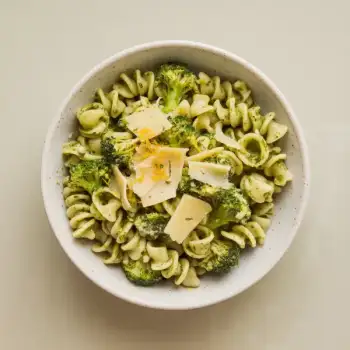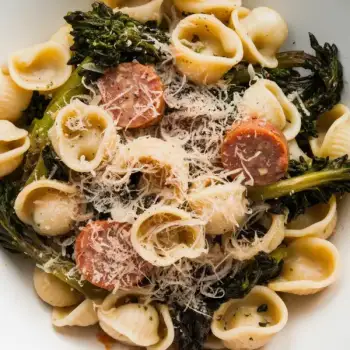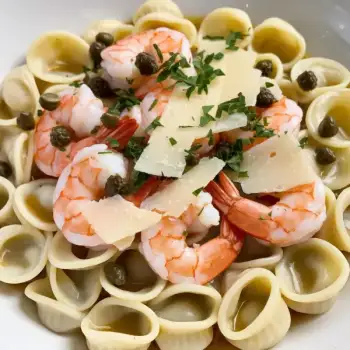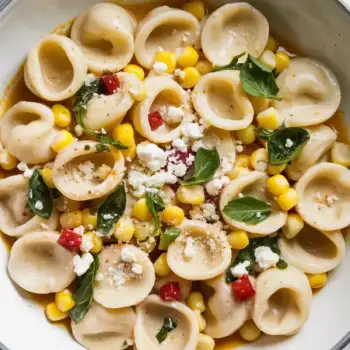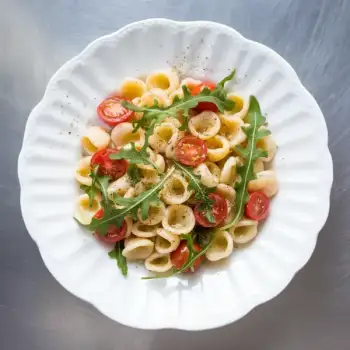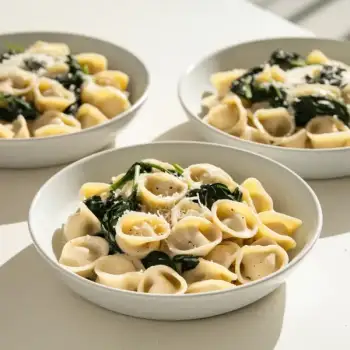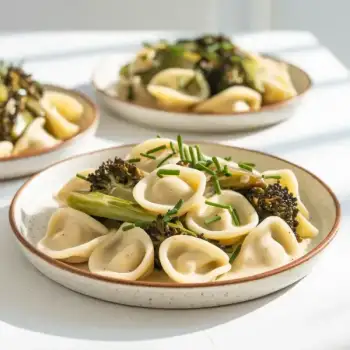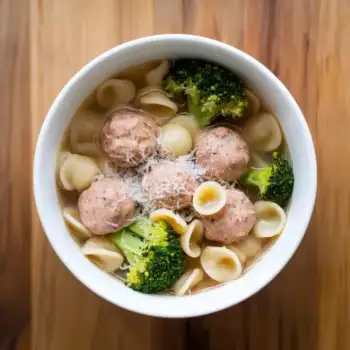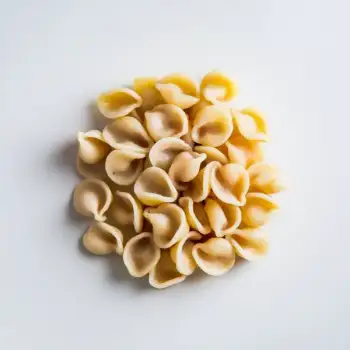


Dried
Orecchiette pasta typically comes in a dried form, made from durum wheat semolina. It is shelf-stable and has a firm texture that holds up well in various sauces.
Fresh
Fresh orecchiette can sometimes be found in specialty stores or made at home. It has a softer texture and a shorter cooking time compared to dried pasta.




dried orecchiette: De Cecco
fresh orecchiette: N/A

Baking: Orecchiette can also be incorporated into baked pasta dishes. After boiling and draining, mix it with your sauce and other ingredients, top with cheese, and bake until bubbly and golden on top.
Boiling: The standard method for cooking orecchiette is to boil it in salted water. Use about 4 quarts of water for every pound of pasta, and add salt to taste (usually around 1 tablespoon). Boil the pasta until it is al dente, which typically takes 9-12 minutes depending on the brand and specific product.
Pan Finishing: After boiling, orecchiette can be finished in a pan with sauce for the last few minutes of cooking. This technique allows the pasta to absorb flavors and meld with the other ingredients, creating a cohesive dish.




